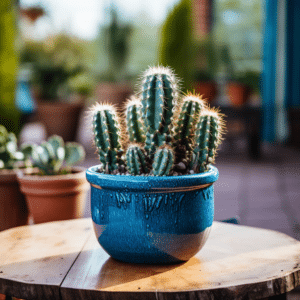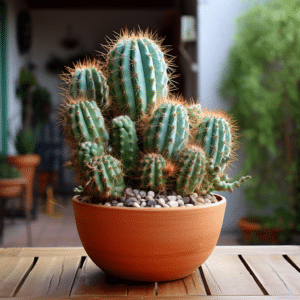Planting a cactus can be a rewarding experience, offering an interesting addition to your home or garden. Despite their prickly exterior, cacti are fascinating plants that come in a variety of shapes and sizes. This guide will provide you with comprehensive instructions on how to plant a cactus, as well as tips for ensuring its healthy growth.
Understanding Cacti

Cacti are unique plants native to arid and semi-arid regions. They are known for their ability to store water in their stems, enabling them to survive in harsh, dry climates. Understanding the nature of cacti is crucial to successfully planting and caring for them.
There are over 2000 different species of cacti, each with its own unique characteristics. Some are small and round, while others can grow to be several feet tall. The type of cactus you choose to plant will determine the specific care it requires.
Choosing the Right Cactus
When choosing a cactus to plant, consider the climate and conditions of your home or garden. Some cacti prefer full sunlight, while others do well in partial shade. Be sure to research the specific needs of the cactus species you choose.
It’s also important to consider the size of the cactus. Some species can grow quite large, which may not be suitable for smaller spaces. Smaller cacti, on the other hand, can be a great choice for indoor planting.
Planting Your Cactus
Once you’ve chosen your cactus, it’s time to plant. This process involves several steps, including preparing the pot or garden bed, handling the cactus safely, and ensuring it’s planted at the right depth.
Remember, cacti are desert plants, so they prefer a well-draining soil mix. A combination of potting soil, coarse sand, and perlite is often recommended. This mix ensures that water drains quickly, preventing root rot.
Preparing the Pot or Garden Bed

Before planting your cactus, prepare the pot or garden bed. If planting in a pot, ensure it has drainage holes at the bottom. Fill the pot with a layer of gravel for additional drainage, followed by your soil mix.
If planting in a garden bed, choose a spot that receives plenty of sunlight. The soil should be well-draining, so consider adding sand or gravel if it’s too dense or clay-like.
Handling and Planting the Cactus
Handling a cactus can be tricky due to its spines. Use thick gloves or wrap the cactus in a thick layer of newspaper to protect your hands. Once you’ve safely handled the cactus, make a hole in the soil that’s deep enough to cover the roots.
Place the cactus in the hole and gently backfill with soil, ensuring the cactus stands upright. Be careful not to plant the cactus too deep as this can cause rot.
Caring for Your Cactus
After planting your cactus, it’s important to provide it with the proper care. This includes watering, fertilizing, and protecting it from pests and diseases.
Remember, cacti are adapted to dry climates, so they don’t require frequent watering. Overwatering can lead to root rot, a common problem with cacti. As a general rule, wait until the soil is completely dry before watering again.
Watering and Fertilizing
When it comes to watering your cactus, less is more. During the growing season (spring and summer), watering once a week is usually sufficient. In the dormant
Fertilizing your cactus can help promote growth and flowering. Use a low-nitrogen cactus fertilizer and follow the package instructions for application rates.
Protecting Your Cactus
Cacti can be susceptible to pests like mealybugs and scale. Regularly inspect your cactus for signs of these pests and treat with an appropriate insecticide if necessary.
Some cacti can also suffer from fungal diseases, often due to overwatering. If you notice any unusual spots or growths on your cactus, consider consulting a plant disease expert.
Conclusion
Planting a cactus can be a fun and rewarding project. With the right preparation and care, your cactus can thrive and become a unique addition to your home or garden. Remember, the key to successful cactus planting is understanding the specific needs of your chosen species and providing the appropriate care.
Whether you’re a seasoned gardener or a beginner, planting a cactus offers a unique gardening experience. So why not give it a try? With a little patience and care, you’ll be rewarded with a fascinating and resilient plant that adds a touch of the desert to your home or garden.